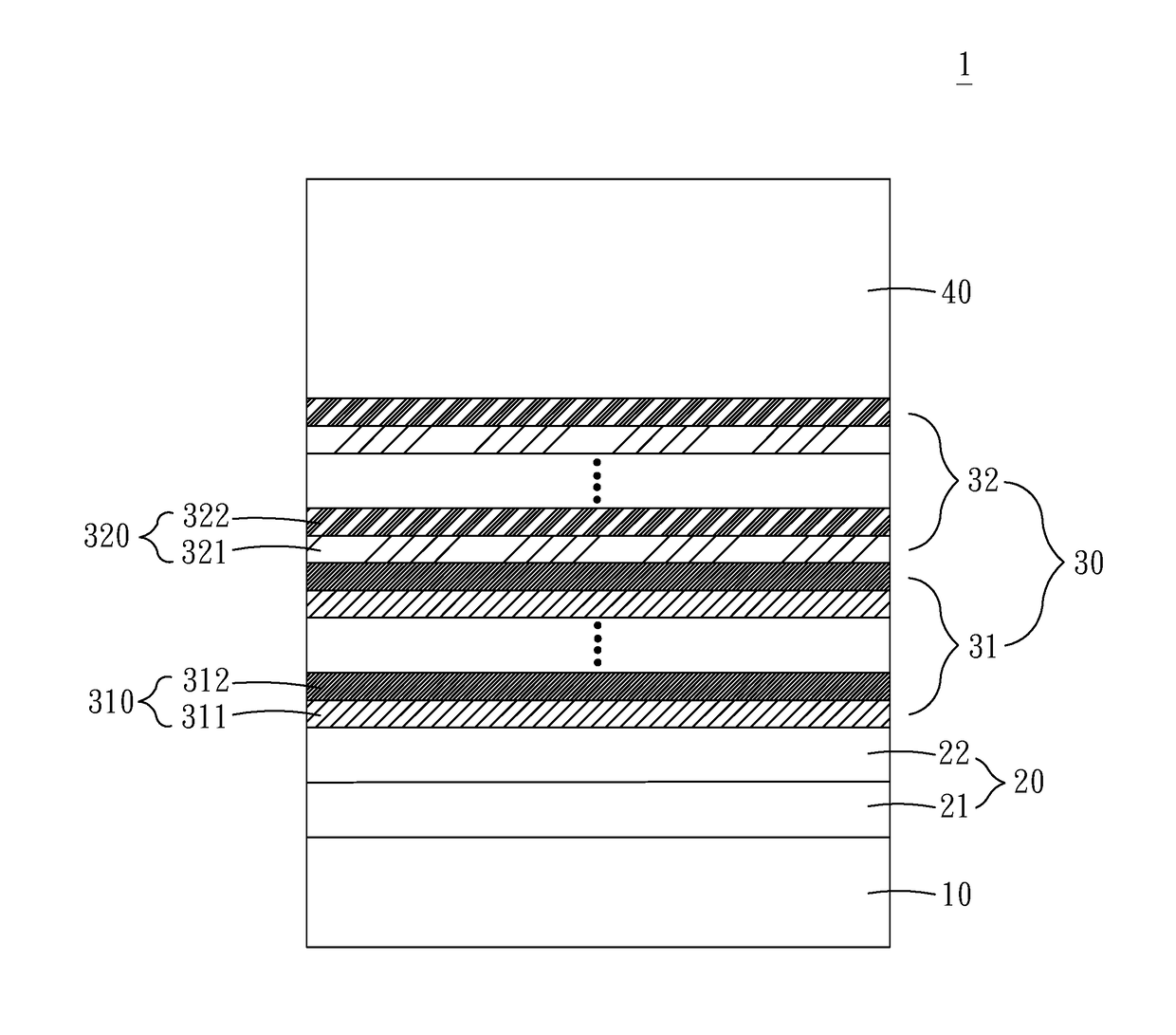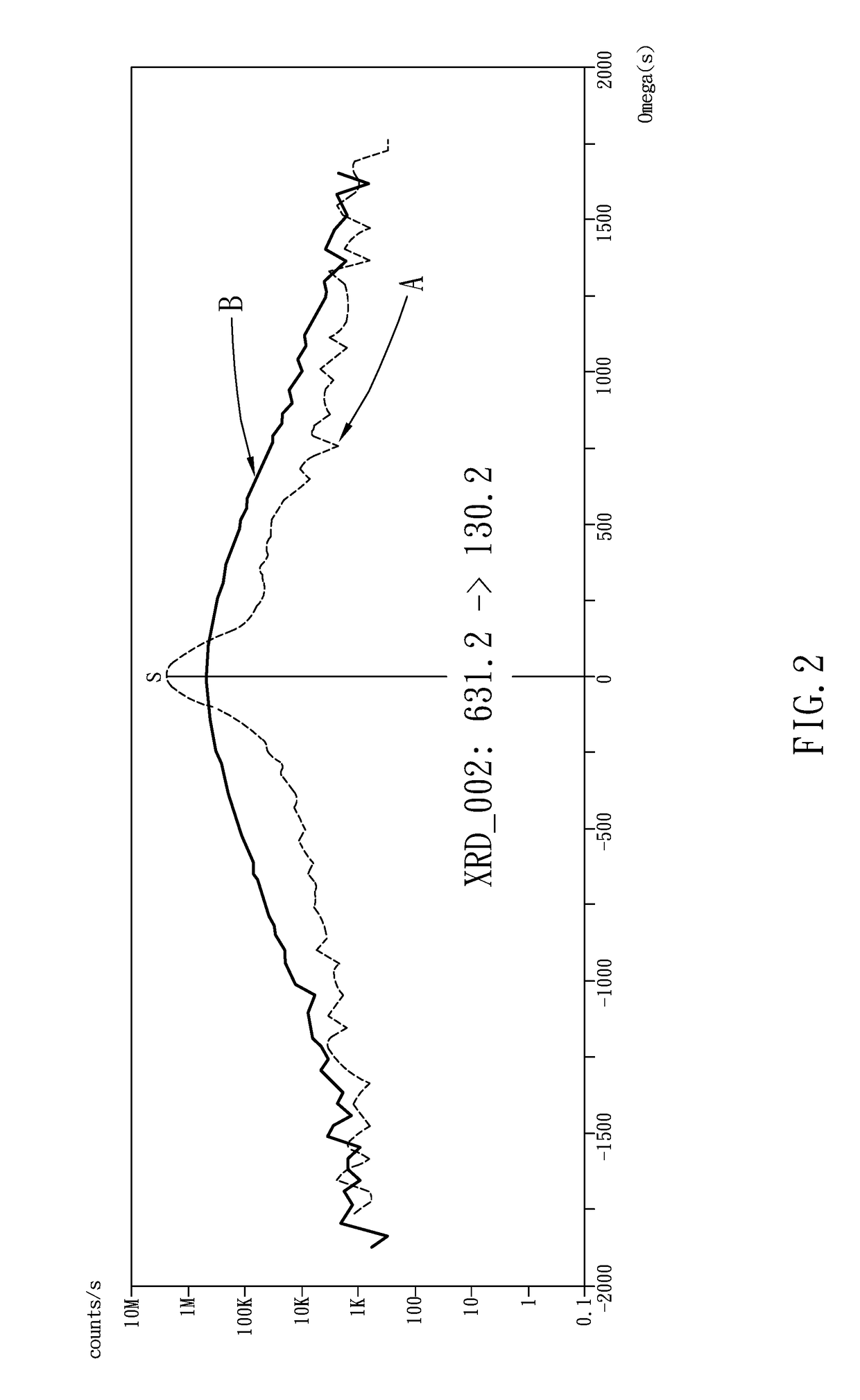Ultraviolet light-emitting diode
- Summary
- Abstract
- Description
- Claims
- Application Information
AI Technical Summary
Benefits of technology
Problems solved by technology
Method used
Image
Examples
first embodiment
[0027]Please refer to FIGS. 1 and 2, which show schematic diagrams of the ultraviolet LED and improvements according to the present invention. As shown in the figures, the present embodiment provides an epitaxial structure 1 of the ultraviolet LED. The epitaxial structure 1 comprises a substrate 10, a buffer layer 20, a gradual superlattice 30, and an n-type semiconductor layer 40. The gradual superlatticc layer 30 comprises a first superlattice layer 31 and a second superlattice layer 32. According to the present invention, the gradual superlattice layer 30 is used for improving the quality of the epitaxial structure 1 of the ultraviolet LED.
[0028]According to the present embodiment, the material of the substrate 10 may be sapphire, glass, or ceramics. According to the present embodiment, a sapphire substrate is adopted for example. The buffer 20 is disposed on the substrate 10. The buffer layer 20 further comprises a first buffer layer 21 and a second buffer layer 22. The first bu...
second embodiment
[0032]Please refer to FIG. 3, which shows a schematic diagram of the ultraviolet LED according to the present invention. As shown in the figure, the difference between the present embodiment and the first one is that the n-type semiconductor layer 40 according to the present embodiment includes the aluminum gallium nitride (AlGaN) material. According to the order of epitaxy, the ultraviolet LED comprises a first n-type semiconductor layer 41, a second n-type semiconductor layer 42, and a third n-type semiconductor layer 43. The second n-type semiconductor 42 is undoped. The doping concentration of the first n-type semiconductor layer 41 is greater than that of the third n-type semiconductor layer 43. In addition, the first and third n-type semiconductor layers are doped with silicon 33. Moreover, the thickness of the first n-type semiconductor layer 41 is greater than the thickness of the second n-type semiconductor layer 42 and the thickness of the third n-type semiconductor layer ...
third embodiment
[0034]Please refer to FIG. 4, which shows a schematic diagram of the ultraviolet LED according to the present invention. As shown in the figure, according to the present embodiment, the gradual superlattice layer 30 is further doped with silicon with the purpose of facilitating epitaxial growth on the second buffer layer 22 (an undoped aluminum nitride (u-AlN) layer) of the buffer layer 20.
[0035]To sum up, the present invention provides an ultraviolet LED. The gradual superlattice layer is disposed between the buffer layer and the n-type semiconductor layer. The gradual superlattice layer comprises a first superlattice layer and a second superlattice layer. The first superlattice layer includes a multi-layer structure having repetitive stacks of a unit formed by a first layer and a second layer. The second superlattice layer includes a multi-layer structure having repetitive stacks of a unit formed by a third layer and a fourth layer. The concentrations of aluminum in the first, sec...
PUM
 Login to View More
Login to View More Abstract
Description
Claims
Application Information
 Login to View More
Login to View More - R&D
- Intellectual Property
- Life Sciences
- Materials
- Tech Scout
- Unparalleled Data Quality
- Higher Quality Content
- 60% Fewer Hallucinations
Browse by: Latest US Patents, China's latest patents, Technical Efficacy Thesaurus, Application Domain, Technology Topic, Popular Technical Reports.
© 2025 PatSnap. All rights reserved.Legal|Privacy policy|Modern Slavery Act Transparency Statement|Sitemap|About US| Contact US: help@patsnap.com



